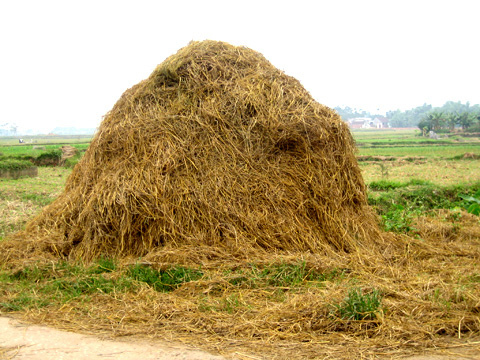By adding rice straw to the soil before planting the next crop, you can return nutrients to the soil, make the soil fertile and in the long run, cut down on fertilizers and improve the yield of your rice farm.
It is estimated that five years of adding rice straw to the soil, 25 pounds of nitrogen can be reduced from the rate of nitrogen fertilizer applied per hectare.

Researchers- Gina Pangga from the Soil Resources Institute, University of the Philippines, College, Laguna and Graeme Blair from the University of England used straw of three rice varieties, namely: Soc Nau, IR 67962 and IR 30 and incorporated them in Alfisol sandy loam soil at a rate of five tons per hectare. They examined the nutrients released by these varieties under flooded and non-flooded conditions and noted their effects on the growth of rice.
Rice plants grown under flooded conditions after adding the straw showed higher yields compared to those that were not flooded. This is because water helps the plants make full use of nitrogen. Flooding the soil can also control weeds, rice water weevil and the stem rot disease. Among the three rice varieties, Soc Nau straw had the highest nitrogen, phosphorus and sulfur- nutrients that are needed by the rice plants for growth and development. It had also the highest straw quality index (SQI).
Straw can improve soil texture and tilth, aeration and water-holding capacity, fertility and soil pH. Because rice straw is composted and not burnt, less carbon dioxide is released into the atmosphere. In the long term, adding straw reduces the need for chemical fertilizers that can damage the environment. This technology turns a problem into a solution by using formerly wasted rice straw to benefit the soil. The process fits into farmers’ busy planting schedules and can help make them more independent of chemical inputs purchased externally. Instead of being unwanted and difficult to dispose of, rice straw could be recycled on the farm.
—————–
Source:
Nutrient Release from Straw of Three Rice Varieties and the Impact on the Growth of Rice by Gina Villegas Pangga from the Soil Resources Institute, University of the Philippines, College, Laguna and Graeme Blair of the Division of Agronomy and Soil Science, School of Rural Science, University of New England, Armidale, Australia
by Junelyn S. de la Rosa, BAR Chronicle, August 2002 Issue (Vol. 3 No. 14)
